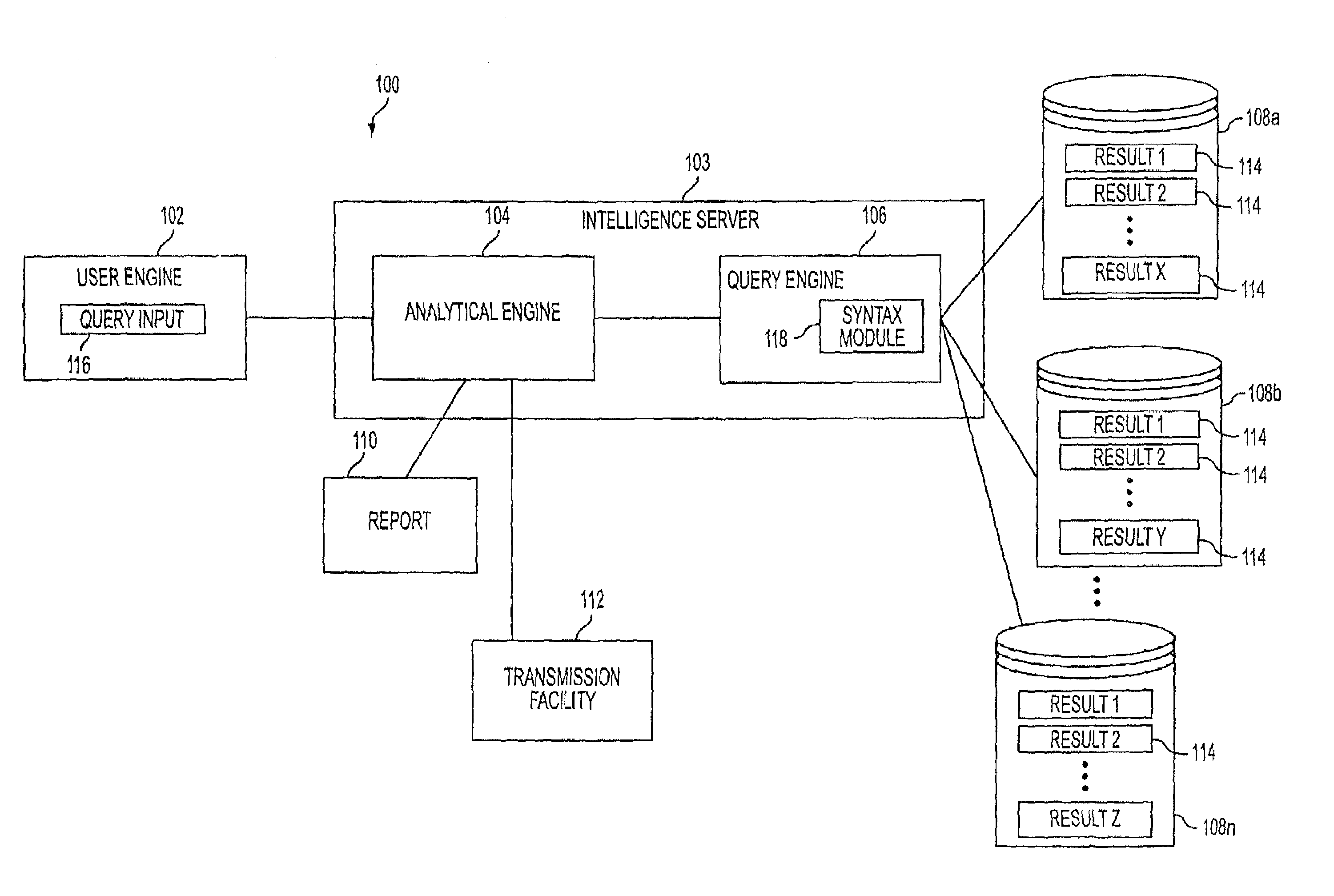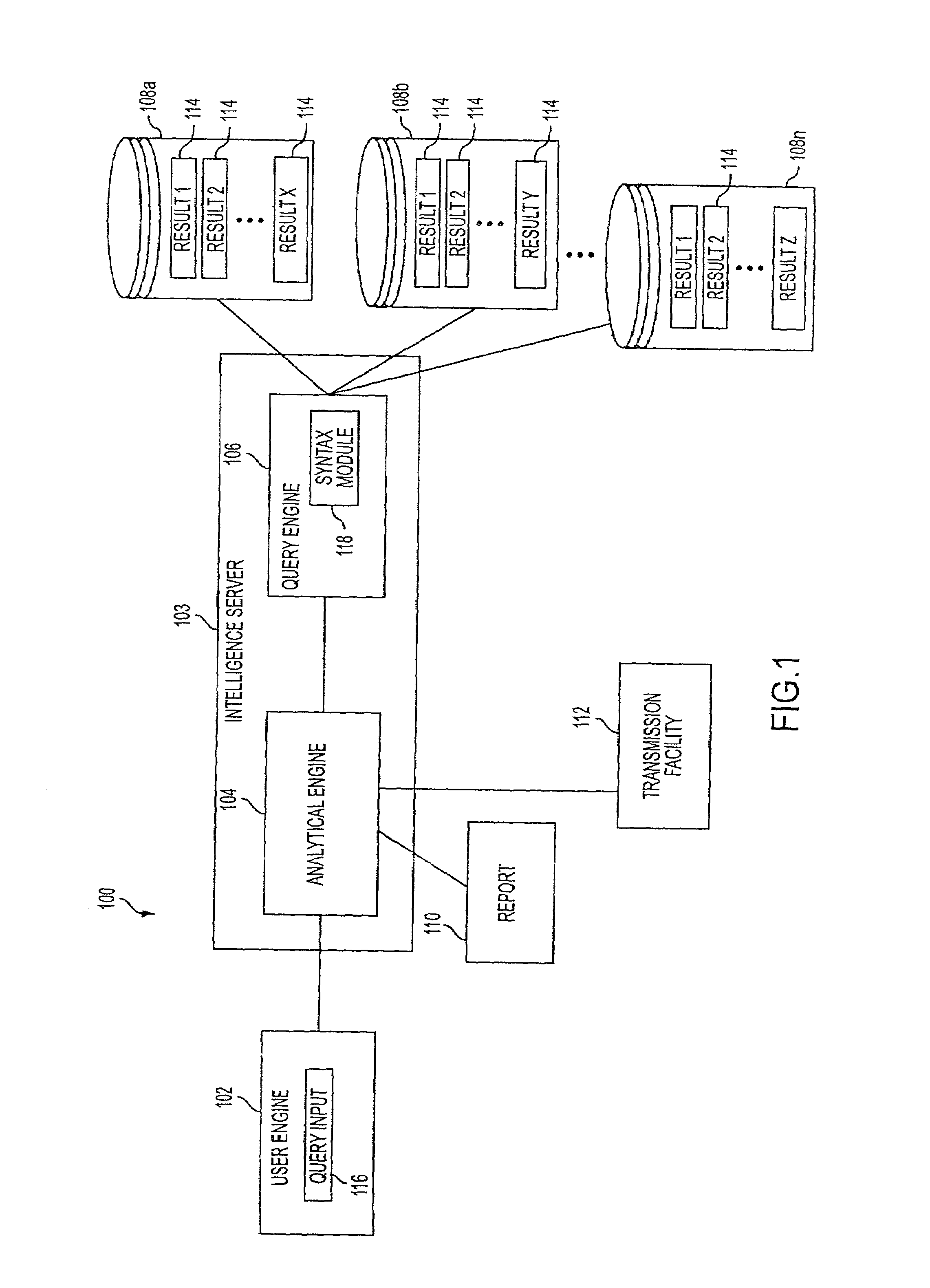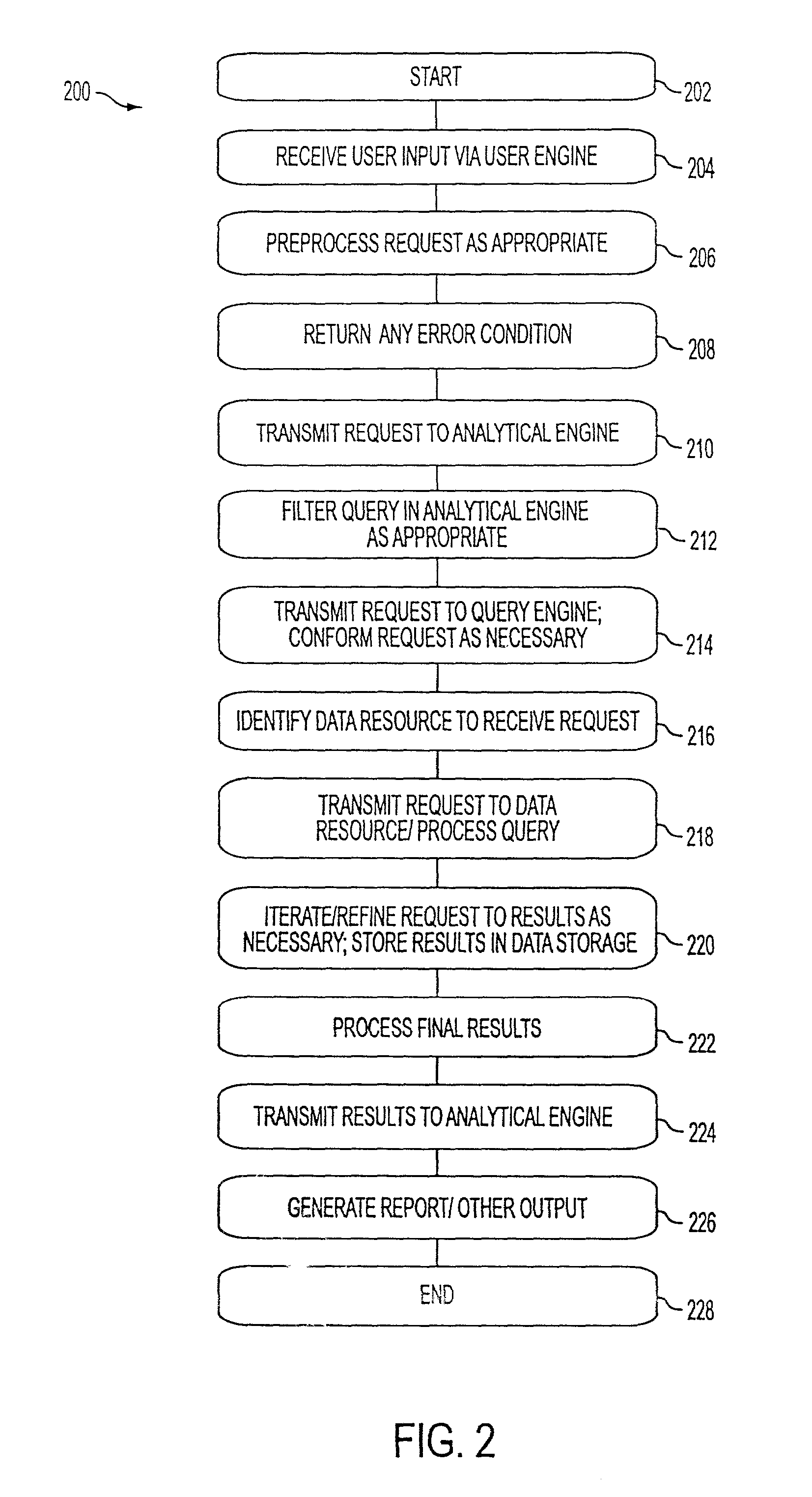Systems and methods for custom grouping of data
a data system and data technology, applied in the field of databases, can solve the problems of complex filtering and grouping of data, and achieve the effect of facilitating filtering and sorting of data
- Summary
- Abstract
- Description
- Claims
- Application Information
AI Technical Summary
Benefits of technology
Problems solved by technology
Method used
Image
Examples
Embodiment Construction
[0024]While the present invention relates to custom grouping of data, FIGS. 1 and 2 relate to an embodiment of an architecture for processing data in which this invention may be used.
[0025]FIG. 1 is a block diagram illustrating a system 100 by which a variety of data resources may be accessed for business analytic, report generation and other intelligence purposes according to an embodiment of the invention. According to a preferred embodiment, the system 100 may comprise an Online Analytical Processing (OLAP) decision support system (DSS). In particular, FIG. 1 may comprise a portion of the MicroStrategy 7 or 7.1 platform which provides a preferred system in which the present invention may be implemented.
[0026]In general, through using the system 100 of the invention, analysts, managers and other users may query or interrogate a plurality of databases or database arrays to extract demographic, sales, and / or financial data and information and other patterns from records stored in su...
PUM
 Login to View More
Login to View More Abstract
Description
Claims
Application Information
 Login to View More
Login to View More - R&D
- Intellectual Property
- Life Sciences
- Materials
- Tech Scout
- Unparalleled Data Quality
- Higher Quality Content
- 60% Fewer Hallucinations
Browse by: Latest US Patents, China's latest patents, Technical Efficacy Thesaurus, Application Domain, Technology Topic, Popular Technical Reports.
© 2025 PatSnap. All rights reserved.Legal|Privacy policy|Modern Slavery Act Transparency Statement|Sitemap|About US| Contact US: help@patsnap.com



